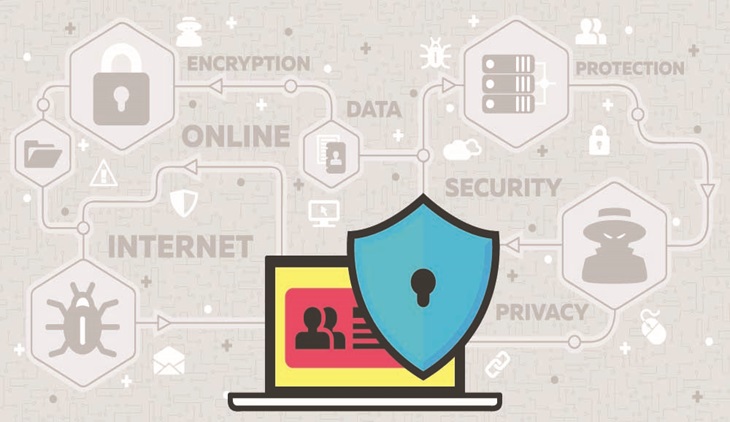
You have a WordPress business website but it’s not secured unless it’s 2024, that’s no longer an option. As cyber threats evolve and businesses move more services online, safeguarding your digital presence is essential for operational integrity. This blog will share some must-have security practices that every WordPress business website owner should follow in order to prevent modern threats and make the site compliant with current & future requirements.
1. WordPress Core, Themes, and Plugins Updated
Keeping your WordPress core, themes, and plugins up to date is arguably the simplest and most effective way of securing a WordPress site. Balancing Modernity with Security Quick updates: Developers frequently release new versions of software to fix vulnerabilities, and upgrade security features and functionality. Not applying these updates could leave your site vulnerable to known security issues.
Automatic Updates:
Enable automatic updates for your minor releases if you want to be sure that even when you forget, you’re still secure.
Compatibility Checks:
Check for Compatibility Issues between your plugins, themes, and the latest version of WordPress you wish to update it with.
2. Employ Uniquely Strong Passwords together with Two-Factor Authentication (2FA)
Passwords are some of the first lines of defense against unauthorized access. Unauthorized access can also happen through weak or reused passwords, which will likely result in a breach. In 2024, businesses must put in place solid passcode requirements and enforce two-factor validation (2FA).
Implement password policies that include combinations of upper case letters, lower case letters, digits, and special characters. Do not use words used every day or common slang expressions they could figure out what you just say. A tractor demands sturdy parts to get the job done, and likewise, a strong password is needed to protect your systems.
Two-Factor Authentication:
Use 2FA to require a second step of verification, such as a code sent via text message to the user’s mobile device before granting access. Because of this, the password will be an extra layer, if it is compromised.
3. Limit Login Attempts
The common threats are brute force attacks where the attacker just keeps trying out multiple passwords until they access. By limiting login attempts these types of attacks have little to no chance of succeeding.
Login Lockdown:
Install a plugin like Login lockDown or Limit login attempt reloaded which restricts the number of login attempts from any one IP address. It temporarily blocks the IP if exceeded.
IP Whitelisting:
To improve the overall security, consider identifying certain IP addresses that will be allowed to access your login page.
4. Implement SSL Certificates
SSL certificates unlock the ability to encrypt every sensitive piece of data that is transmitted all the time between your website and everyone visiting it (i.e., username & password, payment card details). SSL is necessary for business websites, period (2024).
HTTPS which is indicated by an in your web browser address bar secures data but also adds to the credibility and search statistics of your site.
Automatic Renewals:
Choose SSL certificates with automatic renewal so you do not miss any security lapses.
5. Regular Backups
There’s always a chance for something to go wrong, even with remote security at their best. Regular backups also help you restore the site as soon as possible in case of data loss or a breach.
Automated Backups:
Use a backup plugin to automatically take your site back-ups at regular intervals. Be sure these backups are in a secure, safe from the fireplace location such as within an offsite site.
Test Your Backups:
Regularly verify that your backups are working as intended and can be restored quickly when needed.
6. Implement a Web Application Firewall (WAF)
A Web Application Firewall (WAF) is like a security guard between the internet and your website it checks incoming traffic for harmful threats, blocking bad actors from ever setting foot inside your site. WAFs are critical for guarding your system against well-known attacks including SQL Infusion and cross-web page scripting (XSS).
Cloud-Based WAFs:
Cloud-based Web Application Firewalls (WAF), like those that Sucuri or Cloudflare have to offer free, can defend your site while not impacting performance.
Custom Rules:
Set your own rules for matching certain attacks that apply to your business security.
7. Restrict File Permission and Disable the Editor
Improper file permissions can leave your WordPress files accessible to unprivileged users and modify or delete essential data. One of the most common security practices is ensuring that file permissions are set accurately.
File Permissions Set file permissions to 644 G for files, and 755 F for directories.
Disable File Editing:
This will not allow an attacker to download files and edit via the WordPress dashboard. In wp-config add this line To do that, log into your cPanel account or click the link below(if you have already logged in). php file:
Php code:
define(‘DISALLOW_FILE_EDIT’, true);
8. Monitor and Scan for Malware
Frequent checking and malware scanning allow you to learn about any potential threats and respond before they do much damage. To combat this, businesses need to invest in quality security tools that provide real-time monitoring and offer automated scanning as we head into 2024.
Security Plugins:
Use trusted security plugins such as Wordfence, Sucuri, or iThemes Security Scan to run frequent scans and observe suspicious behavior.
Real-Time Alerts Turn on alerts in real-time so that you know whenever someone tries to hack into your site or makes unauthorized changes.
9. Regulatory review of user role and permission
When scaling your business, you would have to give access to multiple team members or third-party contractors. However, to minimize security risks it is vital that you regularly review and update user roles & permissions.
Least Privilege Principle:
Provide only the least level of access that is needed for users to perform their jobs. Do not assign them administrative privileges unless strictly essential.
User Activity Logs:
The implementation of logs will help you track user-made changes and look into unauthorized actions without needing to scramble for any data.
10. Implement Security Headers
Security headers add another layer of defense telling the browsers how they should work with your content. They are known to defend against various attacks like clickjacking and cross-site scripting (XSS).
Set a Content Security Policy (CSP) to define which resources are allowed on your site, reducing the chances of unwanted content.
X-Content-Type-Options:
This stops browsers from interpreting files as a different MIME type to protect against some types of attacks.
Conclusion
In order to ensure the safety and security of your WordPress business website in 2024, a layered approach is paramount; one which considers threats that have evolved over time as well as business needs. Following these security tips can help you stave off breaches that could threaten customer data and damage your business. In an ever-evolving digital landscape, it is important to remain watchful by keeping your site up-to-date and reviewing your security practices periodically.









